Digital resurrection
Bringing one of Italy’s most important lost churches back to life, using cutting-edge technology and a few fragments of stone
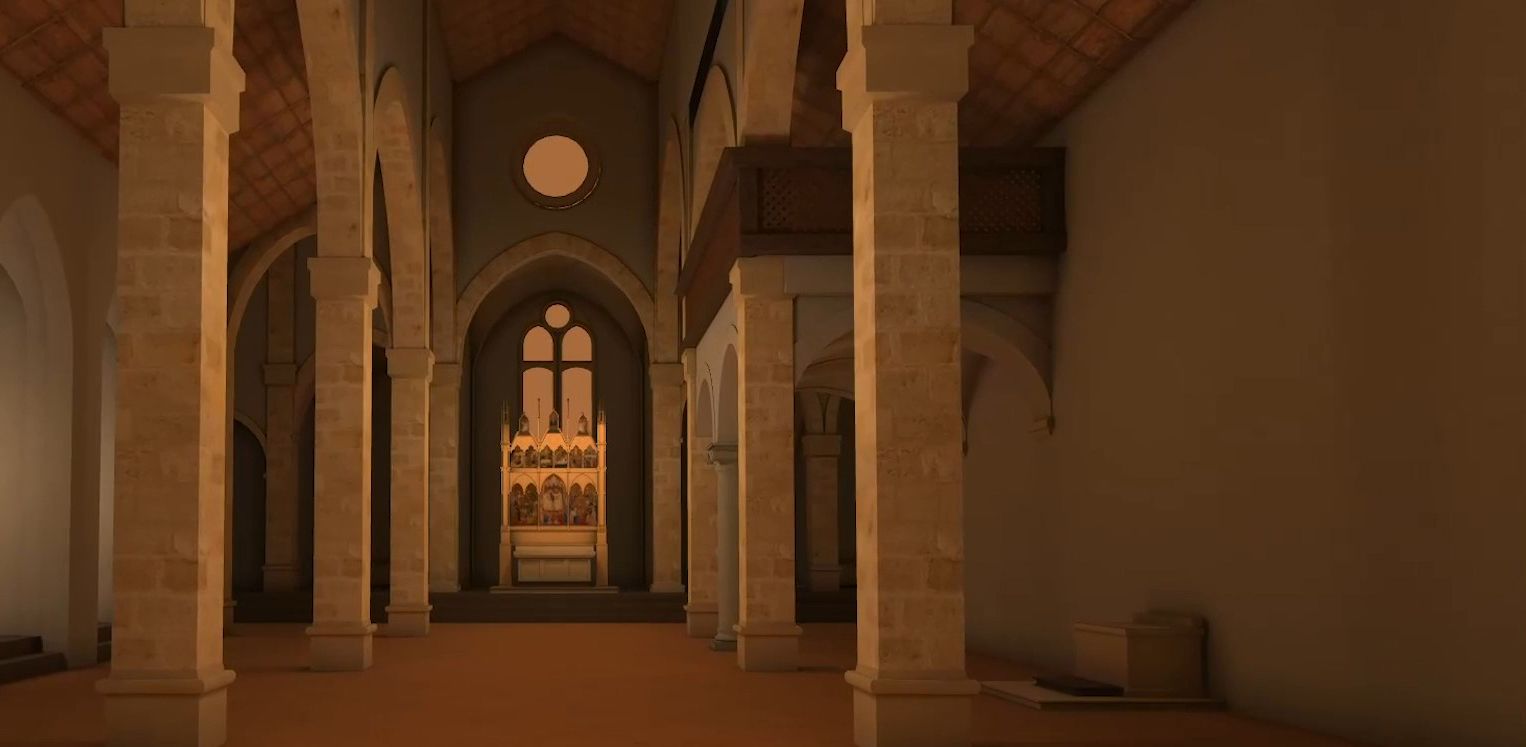
A new app allows users to roam around one of Florence’s oldest and most important churches, San Pier Maggiore, 240 years after it was demolished.

Take a short stroll east from Florence’s famous Duomo until you come to Piazza San Pier Maggiore and you’ll find a lively square of shops and restaurants overlooked by an elegant portico.
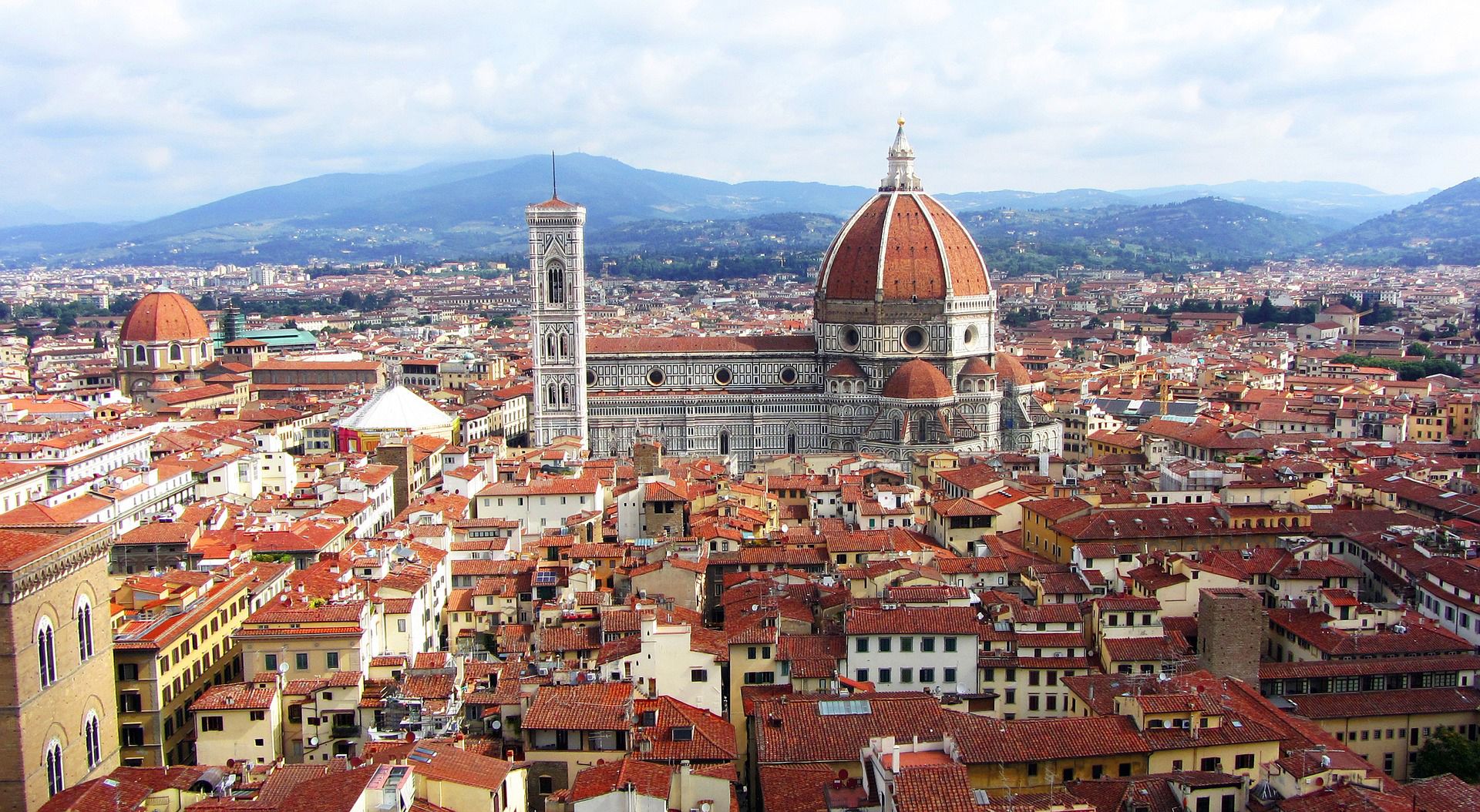
Walk around the block and you might spot a lion-faced gargoyle, or perhaps some eroded ‘keys of heaven’ lodged in a wall. These are the tantalising reminders of a magnificent but mostly forgotten past, of a building filled with masterpieces, now scattered across the globe.
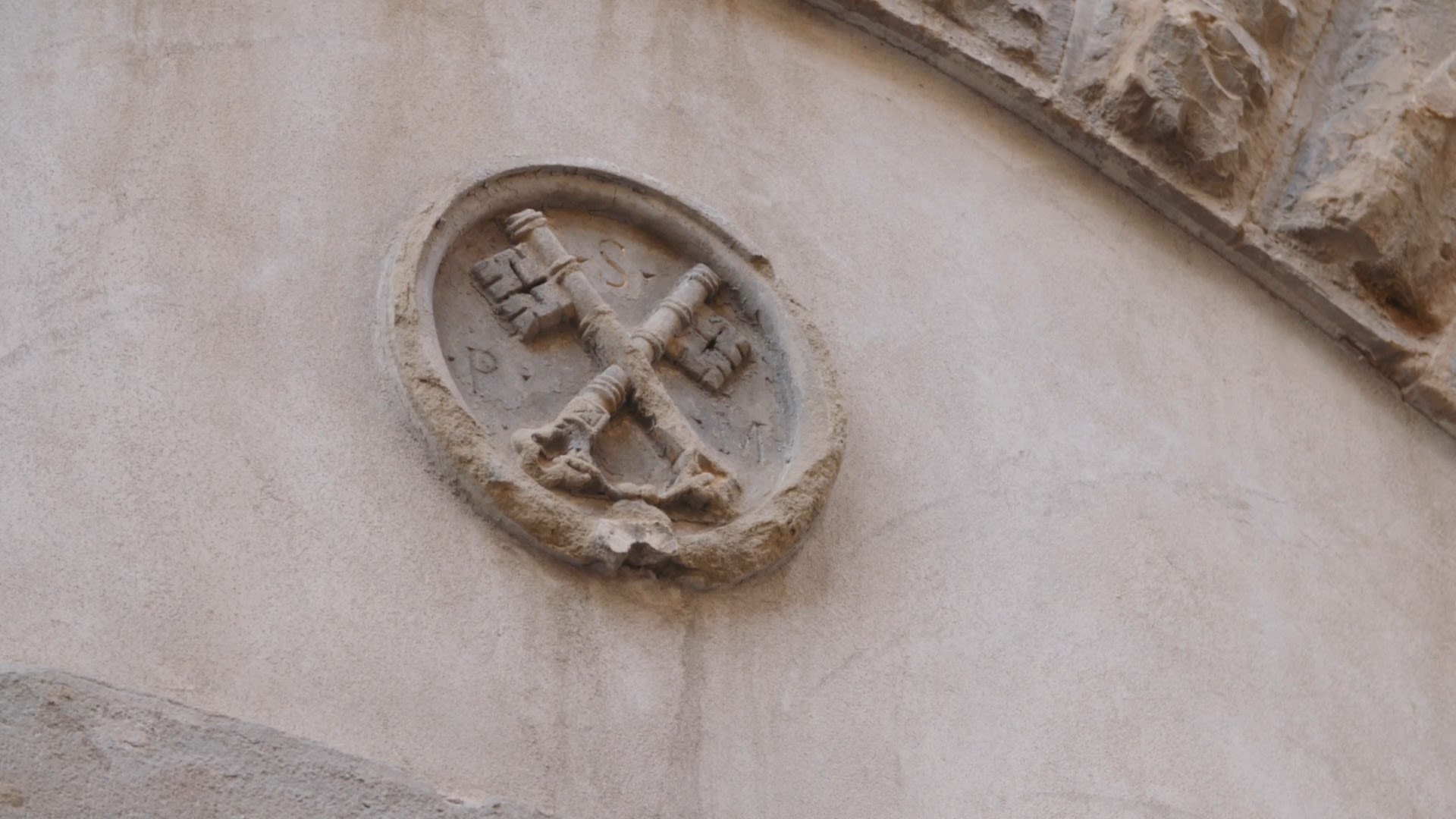
Surviving 'keys of heaven' provide a reminder of the church
Surviving 'keys of heaven' provide a reminder of the church
The church of San Pier Maggiore, built in the years around 1300, was attached to a prestigious convent of Benedictine nuns. Established by the eleventh century, the convent was one of Florence’s oldest foundations and played an important role in the city’s life.
Growing up nearby in the 1270s, the poet Dante would have known that the Abbess of San Pier Maggiore welcomed every new Bishop of Florence by ceremonially marrying him. And in 1371, the artist Jacopo di Cione echoed this symbolic act by painting the coronation of the Virgin by Christ for the church’s high altar: today, his enormous gilded altarpiece hangs in London’s National Gallery.
Detail of Jacopo di Cione & workshop, 'The Coronation of the Virgin', central main tier panel of San Pier Maggiore's high altarpiece (1370-1). The National Gallery, London
Detail of Jacopo di Cione & workshop, 'The Coronation of the Virgin', central main tier panel of San Pier Maggiore's high altarpiece (1370-1). The National Gallery, London
The original Gothic church underwent multiple transformations during the Renaissance period culminating in the addition of an elegant portico on the façade in 1638 – creating the arches that still provide the graceful backdrop to today’s piazza. But before the end of the next century, the rest of the church would be gone, pulled down in 1784 to make way for a market. Chapels were filled with shops and later apartments, while the removal of the roof transformed the nave into an open street.
Now, after five years of painstaking research, Cambridge art historian Donal Cooper – working with Fabrizio Nevola from the University of Exeter at the head of a team of researchers, curators and software developers – has resurrected this cornerstone of Florentine life with a cutting-edge geo-located app.
Hidden Florence 3D: San Pier Maggiore enables iPhone or iPad users to enter a 3D visualisation of the church wherever they are in the world. For those able to visit the site of the church in Florence, a geo-fenced area locks the altarpiece to where it once stood, making the model available for on-site navigation.
The street layout lines up with the model, and structural features of present-day buildings can be understood as elements of the lost church, resulting in a breathtaking time-travelling experience. The Via San Pier Maggiore morphs into the church’s nave.
The team also tailored the app for visitors to the Sainsbury wing of the National Gallery, where Jacopo di Cione’s astonishing altarpiece – one of the largest and most expensive ever made in Florence – now hangs.
App opened and screen raised, the white walls of the gallery suddenly melt away and are replaced by the church’s atmospheric interior. The real altarpiece before you returns to the space it was intended for, offering a new sense of scale and context.
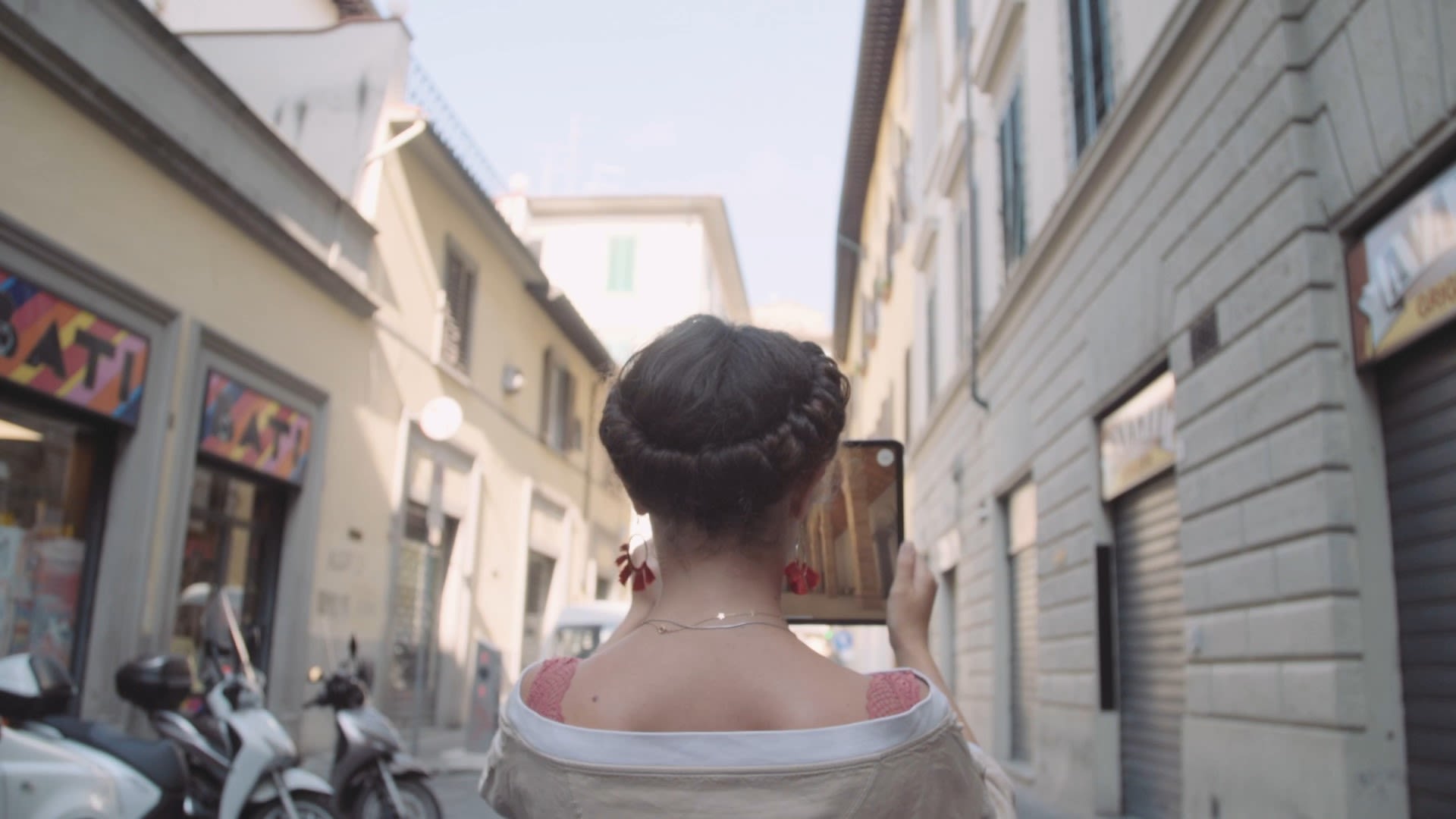
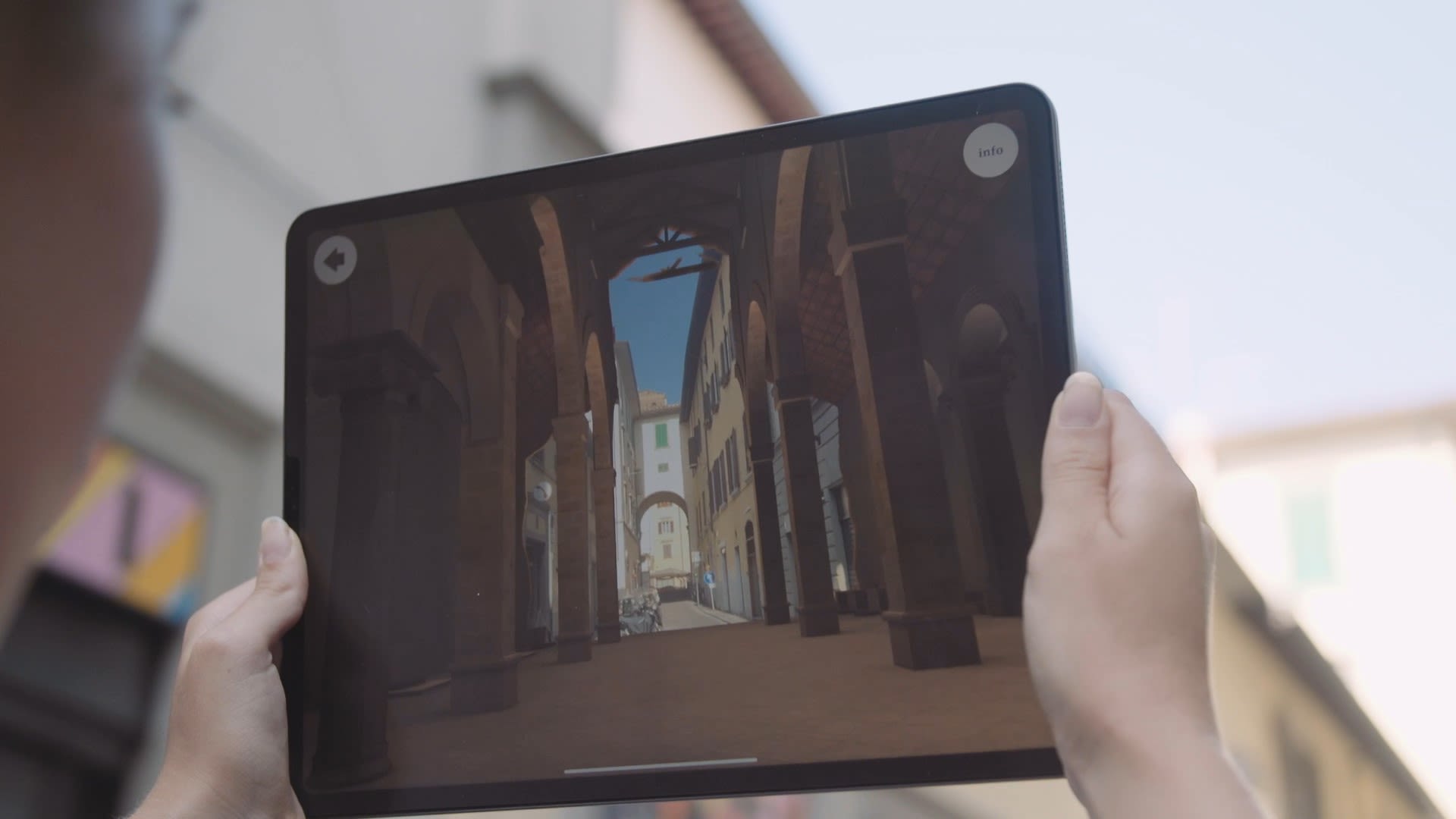
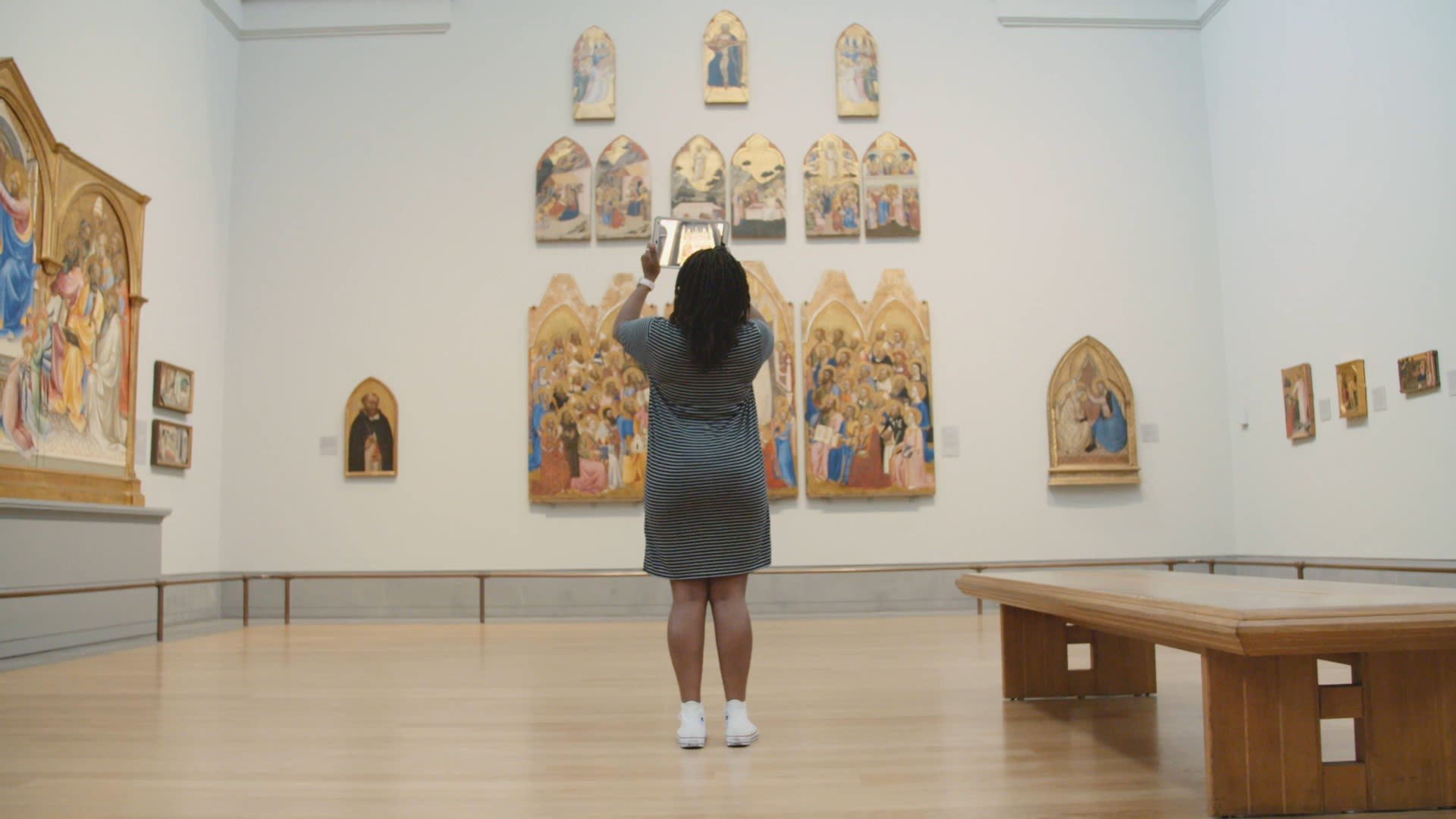
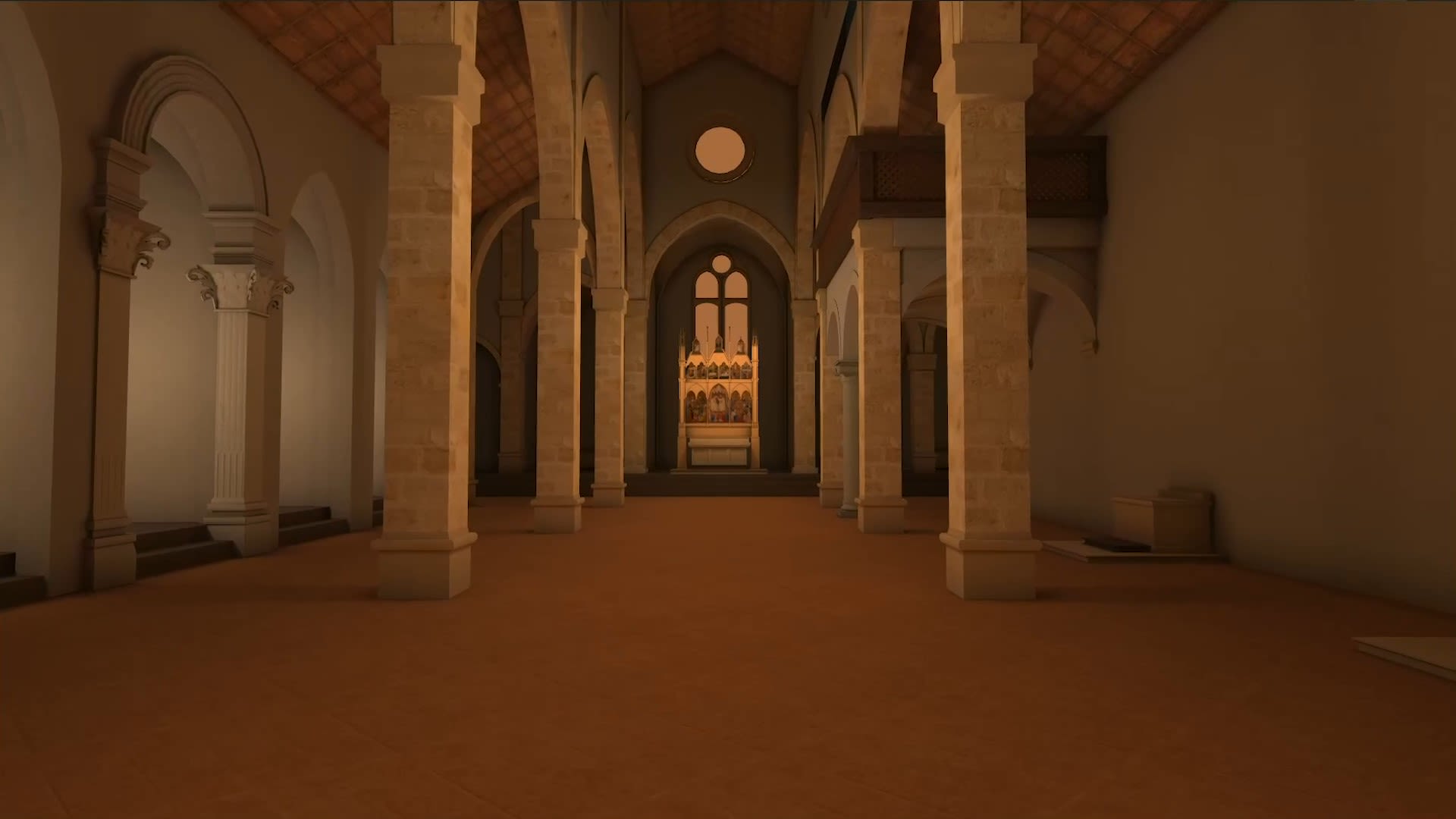
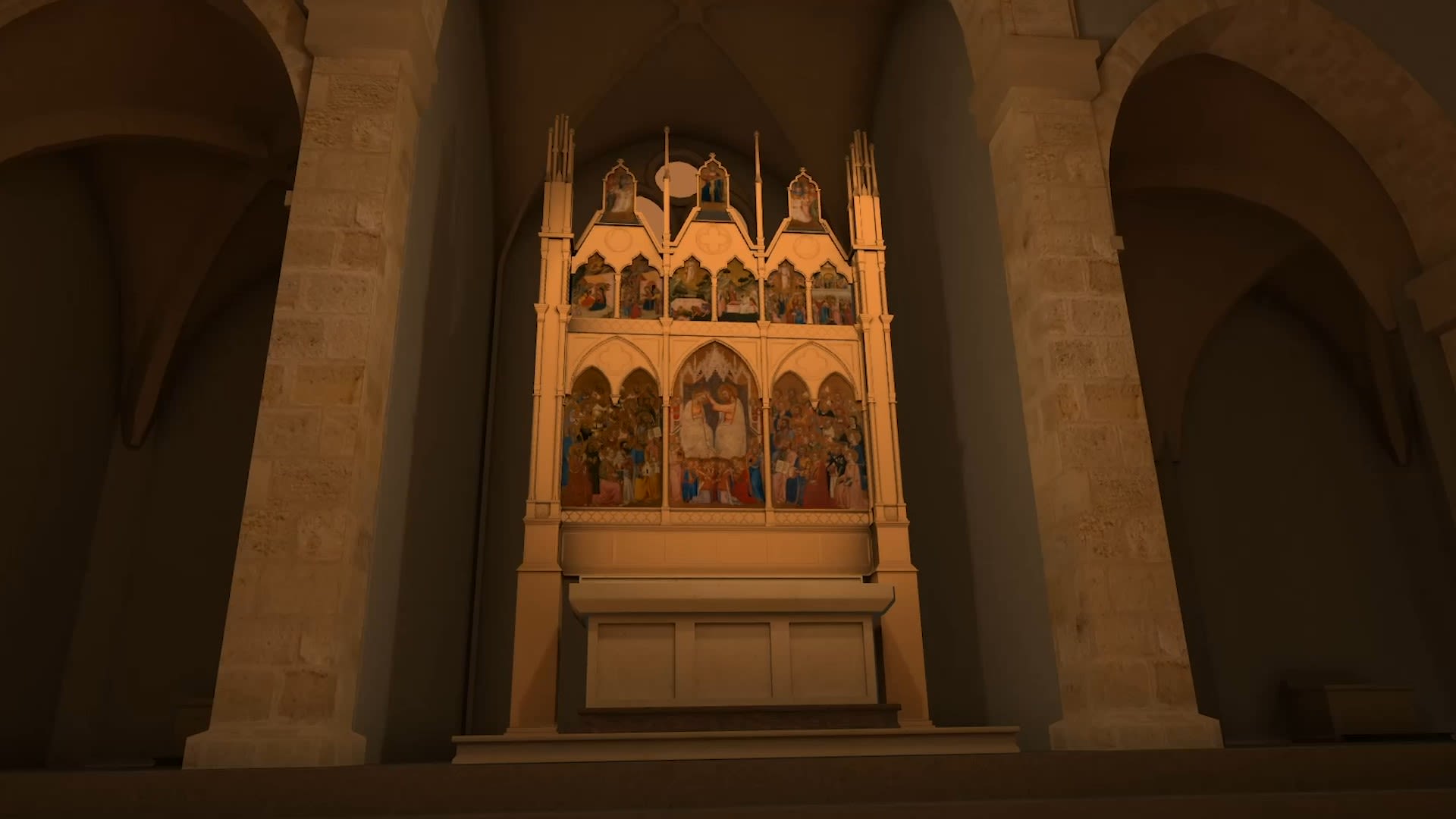
Local knowledge
Cooper and his colleagues began by engaging local people to help identify and decode fragments of the church embedded in their walls.
“The church always was nested within a neighbourhood, cheek by jowl with workshops and homes”, Cooper says. “So it was wonderful to meet residents and business owners, and discover that more of the church had survived than we expected.”
Riccardo Camporesi, the owner of a local café, led the team to the bathroom where he showed them a finely carved Renaissance pilaster. “Among customers, that is a popular topic”, he says proudly.
In a nearby house, they discovered an early fourteenth-century stone arch, which once formed an entrance to side chapel. Originally decorated with coats of arms, at some point this detail was effaced. Documents indicate they would have belonged to the Pazzi family, sworn enemies of the ruling Medici. Most exciting of all, Cooper was invited to see a section of medieval bell tower (campanile) and its spiral staircase preserved in a private apartment.
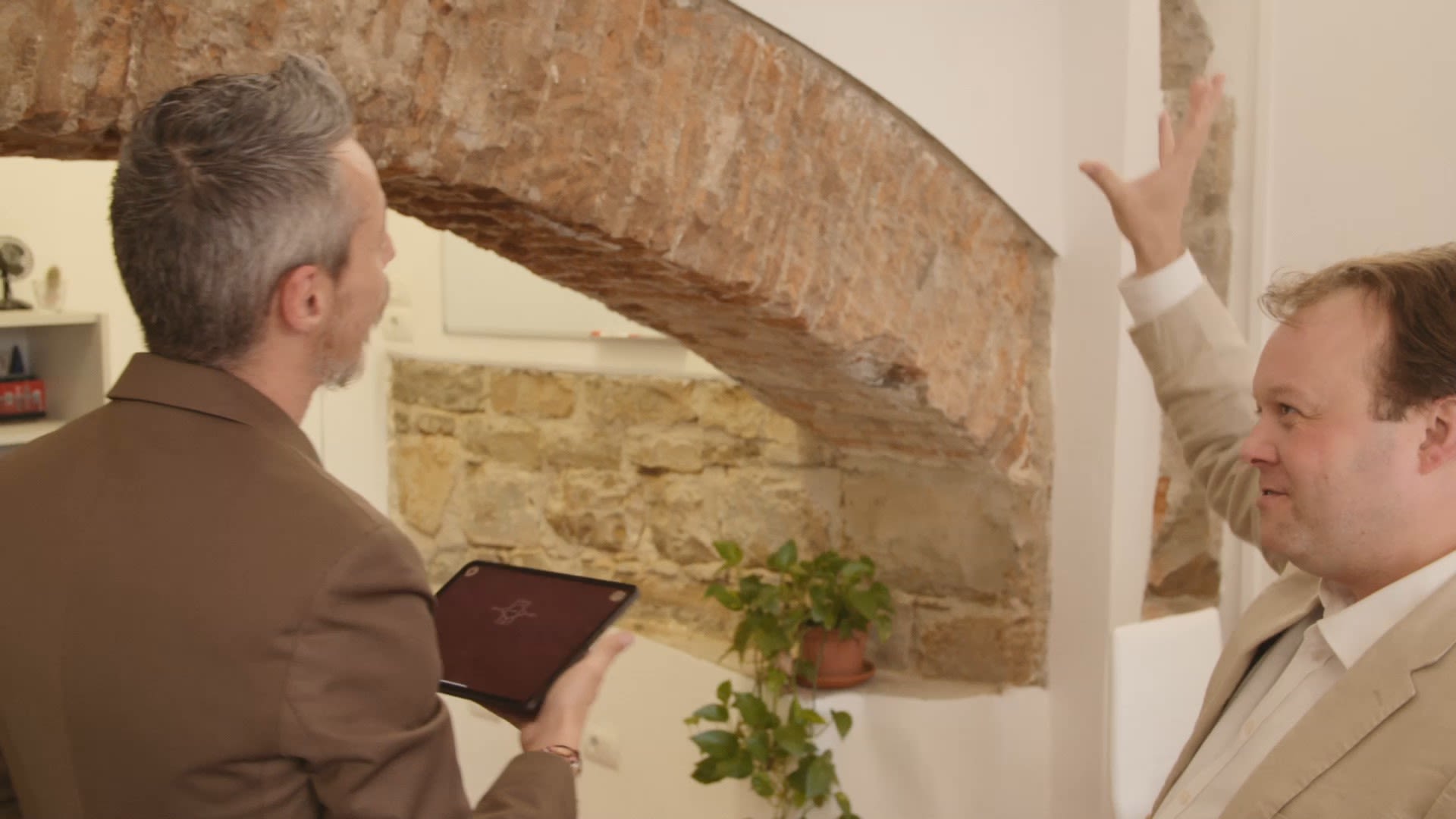
Donal Cooper with local estate agent Nicolò Moretti discussing an arch from from the church in his office
Donal Cooper with local estate agent Nicolò Moretti discussing an arch from from the church in his office
Digital resurrection
Using these crucial clues, as well as historical plans, sections and other archival sources, the team started the time-consuming task of 3D modelling and geolocation to develop a virtual model of the church.
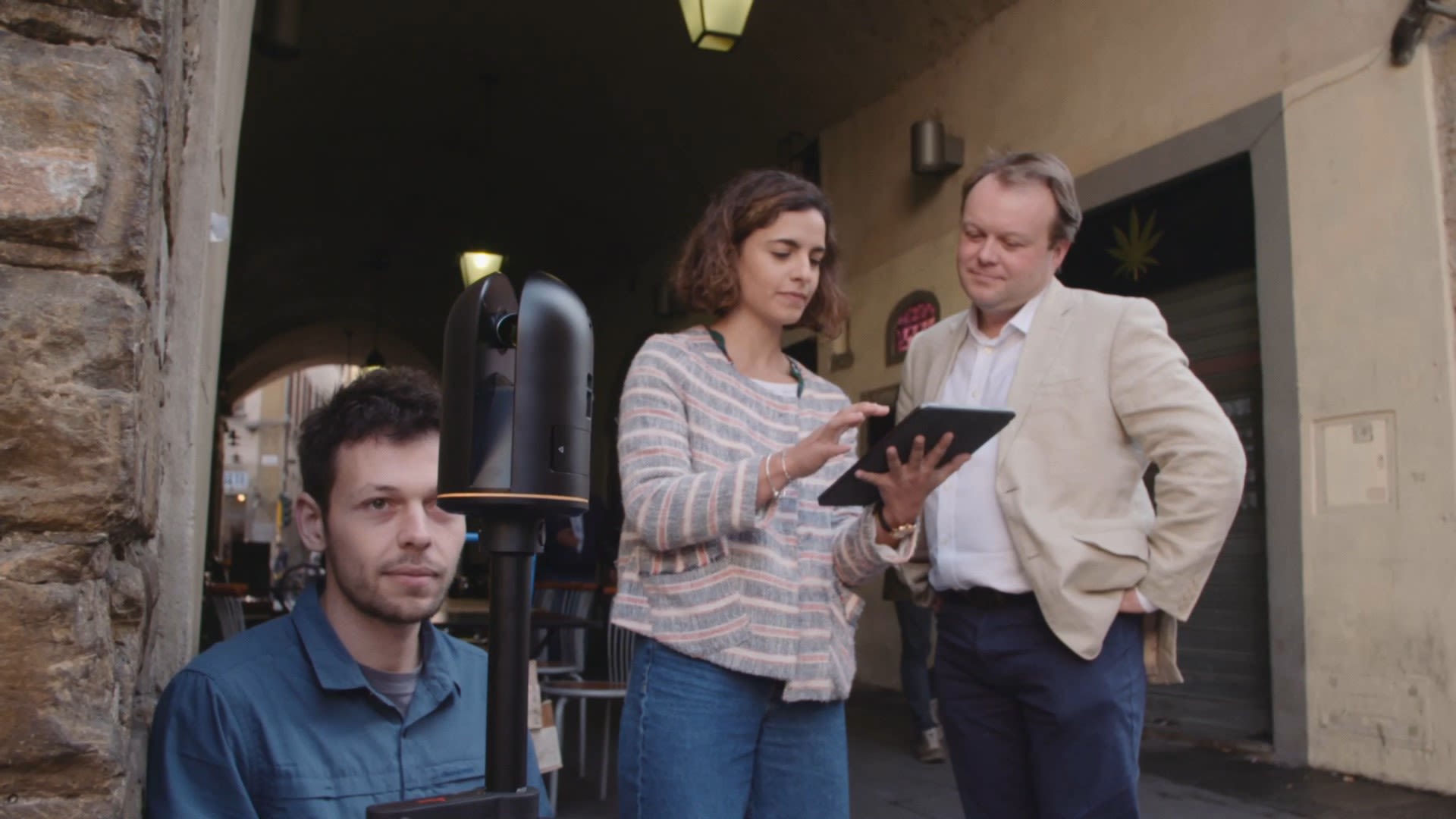
Right to left: Donal Cooper with colleagues Chiara Capulli and Luca Brunke scanning the site of San Pier Maggiore to build their 3D model
Right to left: Donal Cooper with colleagues Chiara Capulli and Luca Brunke scanning the site of San Pier Maggiore to build their 3D model
While the visualisation can never be completely accurate, the team could be confident about the ground-plan and dimensions of the church, its principal building phases, its basic materials (like the reddish-grey pietra forte stone), the locations of its altars and chapels, and the modelling of the high altarpiece.
“The challenge has always been how to visualise uncertainty without saying too much”, says Cooper. “You’ve got to be really careful not to overstep the evidence so we’re delighted that other experts think we’ve done a good job.”
“This project has made us examine a building in a very intensive, complete way that can’t really be achieved with conventional academic research. We had to visualise details that would normally seem inconsequential, so we learnt lots of unexpected things.”
The locals
The residents and shopkeepers who have helped the team over the past five years are amazed by the results.
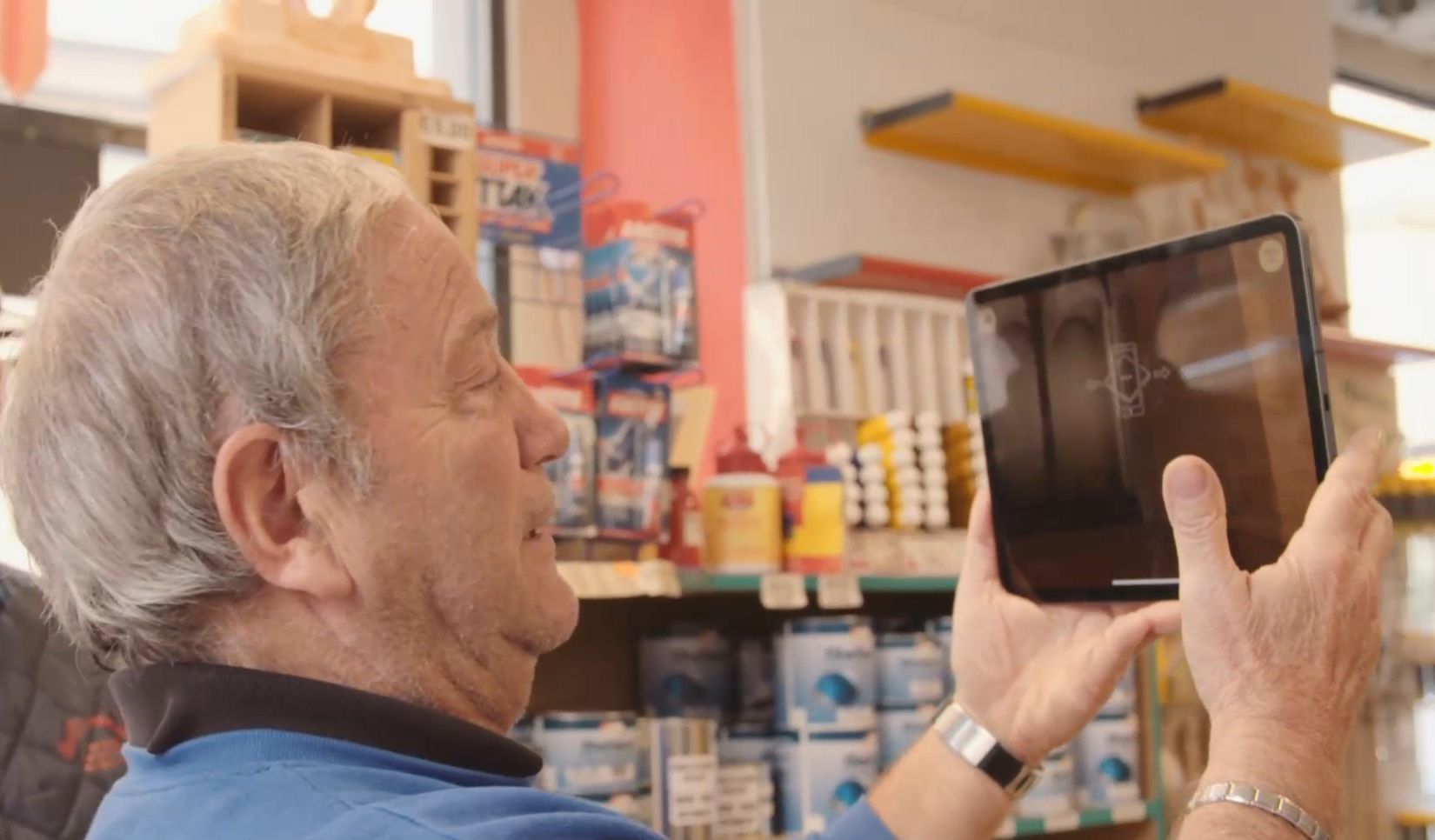
Roberto Lonzi tries out the app
Roberto Lonzi tries out the app
Trying out the app in his paint shop on the Via San Pier Maggiore, Roberto Lonzi concludes: “a masterpiece came out … it’s almost unbelievable”. His neighbour, Susanna Agostini, enthuses: “Digitisation will be very important for us … and those who will come after. Because if there was no such research, the memory really fades very quickly.”
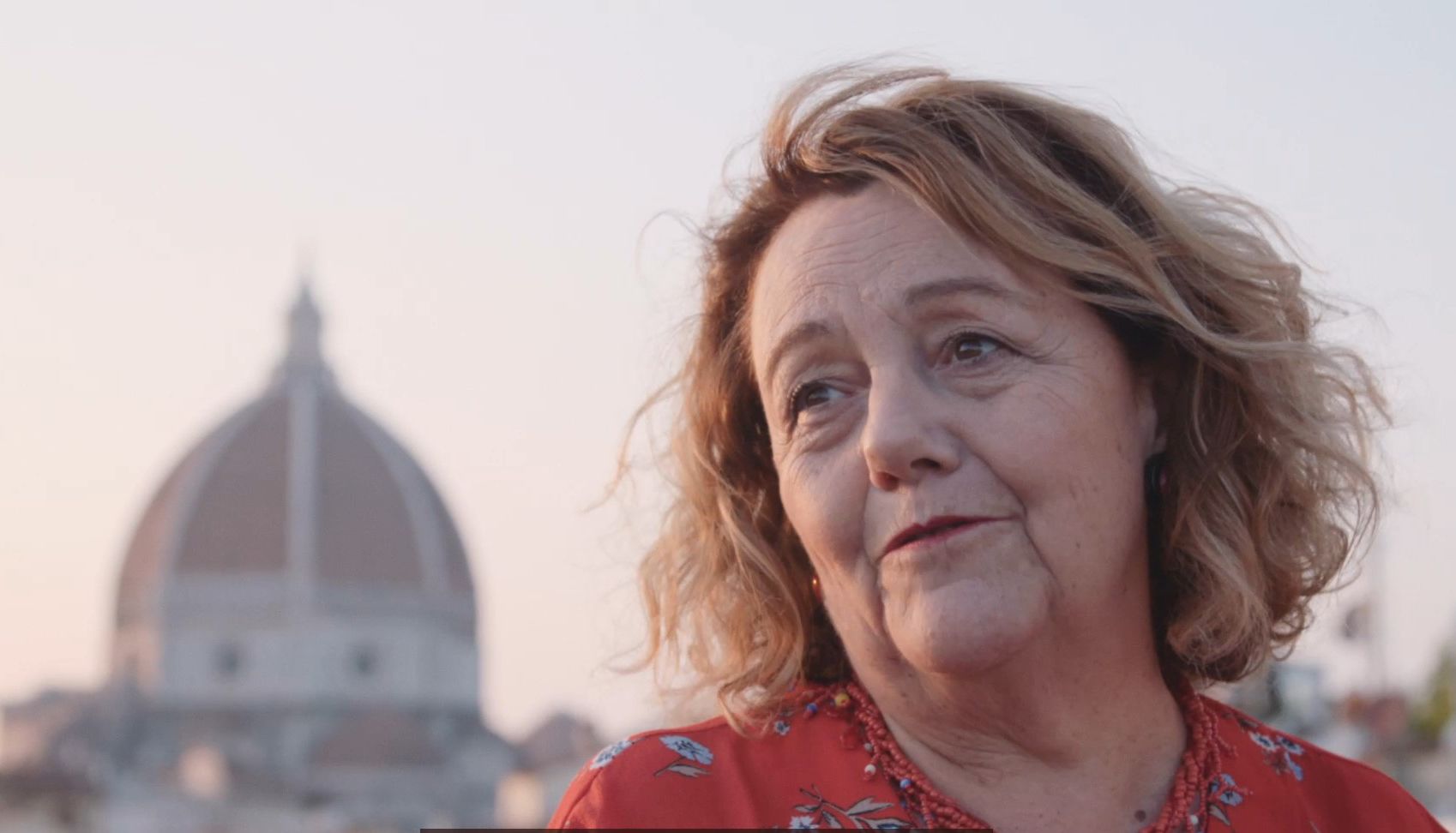
Local resident Susanna Agostini
Local resident Susanna Agostini
The masterpieces
Many Italian churches have been lost or repurposed but in the 1780s San Pier Maggiore was shut down in an unusually ordered fashion by the Florentine government of the day, meaning that its archives and artworks survived intact. A range of paintings and sculptures, by leading artists from the fourteenth to the eighteenth century, are now held in collections in the UK, US, Italy, Russia and elsewhere.
As well as Jacopo di Cione’s high altarpiece, these masterpieces include Francesco Botticini’s Assumption of the Virgin of c.1475-76 (also National Gallery, London); Francesco Granacci’s The Madonna of the Girdle of c.1515 (Ringling Museum of Art, Sarasota); and The Visitation by the underrated mannerist painter Tommaso Manzuoli, signed and dated 1560 (Fitzwilliam Museum, Cambridge).
This last altarpiece, perhaps Manzuoli’s most important surviving painting, can now be seen in Cambridge in the college chapel at Trinity Hall, where it is on permanent loan from the Fitzwilliam. In another Cambridge connection, San Pier Maggiore also features in the background of one of the Fitzwilliam’s best-known paintings, Domenico Veneziano’s Miracle of St Zenobius of c.1442-48, one of the first street scenes created using single-point perspective.

Detail of Domenico Veneziano 'A Miracle of Saint Zenobius', about 1442–8 . (San Pier Maggiore circled). The Fitzwilliam Museum, Cambridge .
Detail of Domenico Veneziano 'A Miracle of Saint Zenobius', about 1442–8 . (San Pier Maggiore circled). The Fitzwilliam Museum, Cambridge .
“Perspective in painting was invented in Florence, and being able to recreate how these works of art related to each other in space is really important. It’s key to working out what the artists intended and what their impact was.”
What next?
The team now plans to make a more advanced model of the church which will integrate additional paintings from other collections. With funding from the Getty Foundation in Los Angeles, the team is working – in partnership with the National Gallery and Fitzwilliam Museum – on a larger version of the project: Florence 4D
They are developing a series of new reconstruction projects across Florence involving churches and palaces. The next model and app to be launched will be for the Museum of the Innocenti, Florence’s foundling hospital, currently scheduled for release in autumn 2020.
Cooper believes that digital applications can help Florence and other major historic cities to develop a healthier relationship with tourism. Florence, like Venice, has had serious problems with tourism bottlenecks at famous sites like the Uffizi, and there has been a growing desire to encourage visitors to discover less well-known treasures across the city.
Cooper says: “While the disappearance of tourism in 2020 has been a heavy economic blow for Florence, many people don’t want everything to return to how it was before. We’ll have to see how things bounce back but there is an opportunity to develop a more sensitive, informed kind of tourism. And technology can play an important role in that.”
Discover more about the project in this short film:
The app and project have been made possible with support from the Getty Foundation, through its Digital Art History initiative; additional support was provided from the University of Exeter, the National Gallery and the Arts and Humanities Research Council, UK. The app was realised in collaboration with developers at Calvium and AR specialists at Zubr.co.


